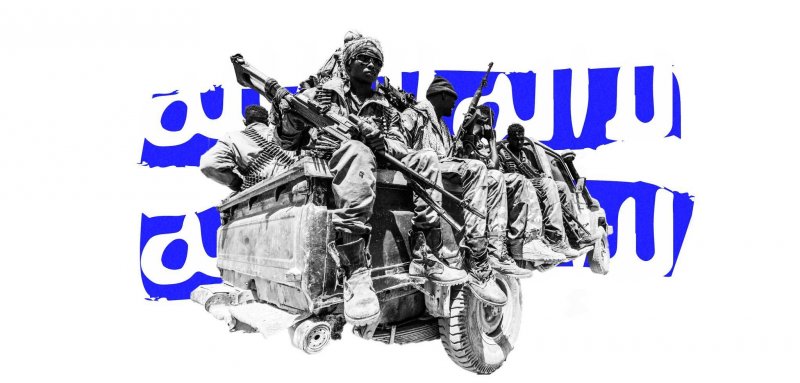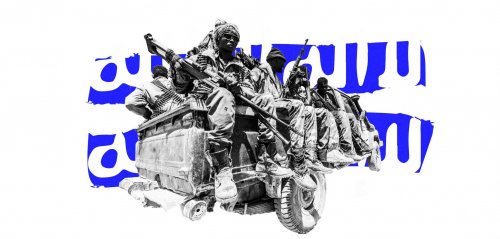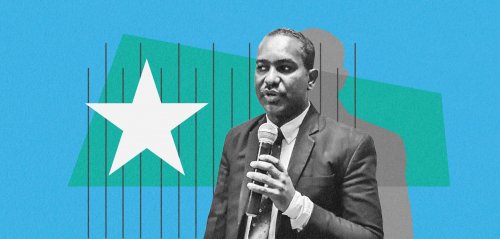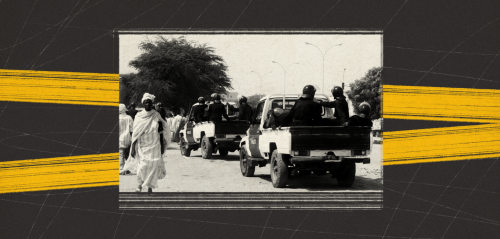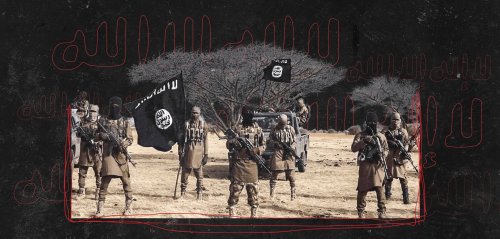Terrorism is a complex and multifaceted phenomenon that has plagued societies throughout history. It is characterized by the use of violence and intimidation to achieve political, religious, or ideological objectives. Over the decades, Somalia has faced significant challenges due to terrorism, which has disrupted its political stability, hindered its economic development, and impeded its societal progress.
An environment ripe for terrorism
The activities of Islamic movements in Somalia can be traced back to the early 1970s when political factors and grievances stemming from the intellectual oppression imposed by the central Somali government, led by the late President Mohamed Siad Barre – who embraced communist ideology in the 1980s – fueled feelings of frustration and injustice among certain groups or individuals.
Clashes with religious figures over the government's proposed reforms were one of the root causes of unrest, ultimately leading to the overthrow of the central authority in 1991.
On January 23, 1975, the government executed a number of religious figures who opposed the new personal status law, viewing it as a direct violation of their religious beliefs, particularly concerning the law's attempt to establish gender equality in inheritance. The government continued to suppress religious figures and conducted mass arrests of Islamic activists in Somalia, including prominent leaders like Abdul Aziz Farah and General Hassan Dahir Aweys, leading to internal conflicts within the Salafi movement in the country, resulting in its division into two factions: jihadist Salafism and scholarly Salafism, later known as the New Salafism.
Under the banner of the "Al-Itihaad al-Islamiya (AIAI)", jihadist Salafism called for taking up arms against the government. In response to the government's crackdown on their activities in society, the jihadist faction gained more influence, according to the book "The Experience of Islamic Courts in Somalia" by former court leader Dr. Omar Iman Abu Bakar.
With Somalia's political landscape descending into further chaos and fragmentation after the collapse of President Siad Barre's regime in 1991, certain elements within the establishment embraced a more extremist ideology
With Somalia's political landscape descending into further chaos and fragmentation after the collapse of President Siad Barre's regime in 1991, certain elements within the establishment embraced a more extremist ideology. Classified documents released by Pentagon-affiliated websites revealed that the Al-Itihaad al-Islamiya (AIAI) established ties with the al-Qaeda network, under Osama bin Laden's leadership, particularly after the movement took control of the city of Luuq in the Gedo region of southern Somalia between 1992 and 1996, declaring it an Islamic state. The movement welcomed and provided sanctuary to displaced Al-Qaeda elements, setting up training camps, as reported by the "Middle East" newspaper in 2007.
According to a report by the International Crisis Group on Islamists in Somalia, these conflicting events allowed the movement to reach its peak and began to stir Somali nationalism in the region. Initially, the movement followed an ideological and violence-free approach, but later, it sought to strengthen Islamic principles and values in Somali society according to its Salafi vision and aimed to unify Somalis under an Islamic state.
These links between Al-Itihaad al-Islamiya (AIAI) and al-Qaeda organization facilitated the flow of money, weapons, and training to its members. The Al-Itihaad al-Islamiya (AIAI) aimed to establish an Islamic state, seeking to unify all Somali territories under its rule. This vision extended beyond Somalia's borders, encompassing parts of Ethiopia and Kenya, where a significant Somali population resides. However, the group's ambitious regional goals and radical ideology posed a major concern for regional stability and security.
The movement found a stronghold in the region of Puntland, which enjoyed autonomy in northern Somalia, and established a de facto capital in the city of Bossaso. Puntland's relative stability, compared to the warlord conflicts in Mogadishu and tribal influence in other areas, made it an attractive base for militant groups like the Al-Itihaad al-Islamiya (AIAI). They took advantage of the region's porous border and maritime region to fund their operations. By the beginning of the 21st century, the United States and Ethiopia began expressing increasing concerns over the movement's activities and its links to al-Qaeda. In 2001, the United States designated the Al-Itihaad al-Islamiya (AIAI) as a foreign terrorist organization.
Classified documents released by Pentagon-affiliated websites revealed that the Al-Itihaad al-Islamiya (AIAI) established ties with the al-Qaeda network under Osama bin Laden's leadership, by welcoming displaced Al-Qaeda agents and setting up training camps
The emergence of Al-Shabaab militant group
From the womb of the Union of Islamic Courts (UICs), Al-Shabaab emerged as an extremist Islamic group that split from the courts union in 2006.
The roots of Al-Shabaab's formation date back to 1991, as its prominent leaders were influenced by the ideological and doctrinal developments of jihadist Salafism during that period. In that year, a group of religious figures, led by Sheikh Mohamed Moalim (considered the spiritual father of Islamic movements in Somalia before he passed away in 2000), convened. They established the first Islamic court called Harsid court (meaning "the Vanguard") to end the chaos, protect state-owned properties, and public facilities that were looted by armed groups during the warlord era. However, the powerful warlord General Farrah Aidid did not allow the emergence of another force that could challenge his authority in the future. He feared its rise and crushed it in its infancy, forcing some of its leaders later to integrate into Islamic movements as a preparatory period for their activities, which later resurfaced after the general's death.
Emerging later on the scene, the Islamic Courts Union rose in the early 21st century amidst Somalia's power vacuum and prevailing chaos. Their alleged mission was to establish law and order based on their interpretation of Islamic principles, earning them some support from locals exhausted by the long-standing conflict. Initially operating as a loose network, the Islamic Courts Union steadily expanded its influence and control, eventually consolidating into a more organized and centralized entity, successfully seizing control of Mogadishu and various other regions in the country.
In December 2006, with support from the internationally recognized Transitional Federal Government (TFG) of Somalia (2004-2012), Ethiopian forces launched a large-scale military operation against the Islamic Courts Union with the aim of taking over the capital, Mogadishu.
Notably, Al-Shabaab, designated as a global terrorist group, initially presented itself as the military wing of the Islamic Courts Union, especially during its ascendancy in southern Somalia in mid-2006, as documented in the book "The Experience of Islamic Courts in Somalia". The book stated that the movement held significant sway within the military wing of the courts.
Terrorist attacks carried out by Al-Shabaab against civilians, military, and security forces make headlines every day, as do military operations by government forces against the group
The defeat of the Islamic Courts Union at the hands of the Transitional Federal Government of Somalia, supported by Ethiopian forces, and the subsequent escape of its key leaders from Somalia, preceded the formation of an alliance with the Somali opposition at the Asmara Conference in Eritrea in 2007. This alliance was one of the main reasons behind Al-Shabaab's split from the union, claiming it was due to their alignment with secularists and the West, as well as their abandonment of the concept of jihad for the sake of Allah.
Al-Shabaab's allegiance to Al-Qaeda
Following military setbacks suffered by Al-Shabaab in clashes with the Transitional Federal Government of Somalia and its allies, the movement evacuated some of its key positions, particularly in Mogadishu.
In 2012, Al-Shabaab publicly pledged allegiance and loyalty to the late leader of Al-Qaeda, Ayman al-Zawahiri, through an audio message by its former leader Mukhtar Abu Zubair. This official affiliation strengthened ties between Al-Qaeda and Al-Shabaab, creating channels for cooperation, including the exchange of expertise, funding, and training. In return, Al-Qaeda welcomed Al-Shabaab's allegiance through a recorded video by Zawahiri, describing it as "joining the global jihad."
At the time, Al-Qaeda considered Somalia a strategic location to expand its influence in East Africa. With Al-Shabaab controlling significant portions of southern Somalia, it provided a safe haven for Al-Qaeda operatives, allowing them to conduct training and plan terrorist operations. Consequently, several Al-Shabaab leaders were added to the terrorist list.
Al-Qaeda considered Somalia a strategic location to expand its influence in East Africa. With Al-Shabaab controlling significant portions of southern Somalia, it provided a safe haven for Al-Qaeda operatives, allowing them to conduct training and plan operations
The movement aims to implement a strict version of what they call "Islamic Sharia law". Their vision includes laws and regulations such as public executions, amputations, and flogging for those they believe have violated their teachings.
In their publications, the movement claims to be fighting against Western and African presence in Somalia and combating the Somali army and government officials, whom they consider agents and "puppets of the occupiers."
Similar to terrorist movements that arose under Al-Qaeda's guidance and embraced the ideology of global jihad, the returning Somali fighters who participated in the Afghan war during the Soviet occupation played a significant role in establishing the Al-Shabaab movement and shaping its ideology.
The group is notorious for its remarkable ability to generate substantial resources, reaching up to $100 million annually. It achieves this through various means, such as imposing taxes on local businesses, transportation, and agricultural activities, as well as levying fees on individuals and companies operating within its controlled territories and extorting the business community. According to a report by the "Africa Center for Strategic Studies", the movement's operatives meticulously maintain records of citizens' assets to collect a 2.5% annual tax, which they label as "Zakat". The collection of Zakat is supervised by the "Amniyat", the intelligence arm of Al-Shabaab, through intimidation and systematic violence. Additionally, the group secures revenue from ransoms demanded for the release of abducted foreign citizens, including relief workers and journalists.
A bloody record of terror
Since its inception, Al-Shabaab has relentlessly executed terrorist attacks and operations against civilians, Somali security and military forces, as well as foreign forces present in the country based on agreements with the federal government. The group has also carried out terrorist operations in northeastern regions of Kenya and made multiple attempts to target areas in Ethiopia that share borders with Somalia.
Since the formation of the Transitional Government in 2004, which later evolved into the Federal Government in 2012, the war against Al-Shabaab, with the support of African Union forces, the United States, and Western allies, has been an ongoing struggle. President Hassan Sheikh Mahmoud's military operations in August 2022, known as the "Decisive War," initially brought significant gains for government forces. However, in recent months, these operations have lost momentum, while Al-Shabaab has intensified the pace of its attacks. The group's most recent attack targeted the "Gali Siad" military academy in the Hodan district of the capital, Mogadishu. During a training session, a suicide bomber detonated an explosive belt, resulting in the death of 25 soldiers and injuring 70 others. Al-Shabaab claimed responsibility for the attack. In response, the federal government stated that thousands of Al-Shabaab members, including foreigners, had been killed since the launch of operations against the group.
On a daily basis, there are reports of terrorist attacks perpetrated by the group against civilians, security, and military forces, as well as military operations by government forces against the movement. The following is a list of some of the most notable attacks by Al-Shabaab throughout its history:
In Kenya, the group targeted the Westgate Mall in 2013, resulting in the death of 67 people after a four-day siege and clashes. In 2015, Al-Shabaab raided the Garissa University College in northeastern Kenya, killing 16 people and injuring 65 others, most of whom were students who had no connection to the conflict.
In Somalia, the capital, Mogadishu, witnessed the highest number of the group's crimes, including the killing of 100 people and injuring hundreds in two suicide bombings that targeted the Ministry of Education in 2022. Additionally, in 2017, a suicide attack at the "Suubi" commercial intersection resulted in 100 fatalities and 300 injuries. This was preceded shortly by another suicide bombing in a nearby location, which claimed around 512 lives. The list of crimes committed by Al-Shabaab against the Somali people and neighboring countries continues to grow.
For instance, the "Africa Center for Strategic Studies" report, released in March 2023, on terrorism statistics for the year 2022, highlights the following concerning Somalia: In 2022, there were 6,255 reported deaths attributed to Al-Shabaab, a significant increase of 2,606 cases compared to the previous year. This represents a record-high level of fatalities, surpassing the combined total for 2020 and 2021. The report also indicates that Somalia accounted for 37% of terrorist activity in Africa in 2022.
Raseef22 is a not for profit entity. Our focus is on quality journalism. Every contribution to the NasRaseef membership goes directly towards journalism production. We stand independent, not accepting corporate sponsorships, sponsored content or political funding.
Support our mission to keep Raseef22 available to all readers by clicking here!
Interested in writing with us? Check our pitch process here!
